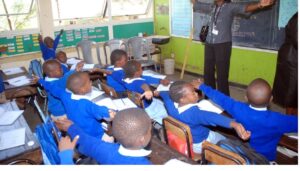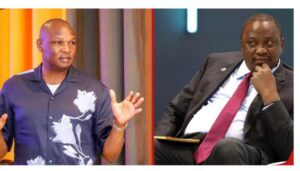Government reveals new HELB tech to select 45,000 poor students for funding

Government reveals new HELB tech to select 45,000 poor students who qualify for full university funding
Government reveals new HELB tech to select 45,000 poor students who qualify for full university funding.
On Tuesday, May 16, the government outlined the strategies it is looking into to identify the 45,000 underprivileged students who are eligible for full university support.
Geoffrey Monari, the head of the University Fund (UF), and Beatrice Inyangala, the principal secretary of the State Department of Higher Education and Research while appearing on Citizen TV disclosed that the system will be entirely scientific.
Monari added that the institution would employ an algorithm to decide who merited full funding from the government and who would receive half funding—this will be a first for Higher Education Loans Board (HELB).
“It will be hard for students to lie their level of need since HELB will use different databases for verification.
“The information students will provide will be cross-checked through Kenya Revenue Authority (KRA), The National Health Insurance Fund (NHIF), and The National Social Security Fund (NSSF) to determine whether the students lied in their application about the level incomes of their parents,” Monari explained.
He further indicated that Identity Card numbers were linked to Integrated Population Registration System (IPRS) making it possible to establish the level of need after looking at the different databases.
“Currently we are exploring how the student’s details can be linked to the population census where various households had given their level of income,” he added.
On whether students from single parents would be prioritised, Monari explained, “We will look at the schools where the student attended. If the student was self-sponsored to a top private school, that will be an indicator they do not need the full funding.”
Inyangala added that the income of parents would also determine if the student got full funding.
Canada promises to support Ruto’s Hustler Fund project
TSC proposes hiring of 20,000 interns in the 2023/2024 financial year
Teachers on contract to wait till 2025 to be hired on permanent terms- TSC
Kenya’s grand plan to expand SGR to Kisumu, Malaba, and Isiolo at a cost of KSh2.1 trillion
“If someone is earning a monthly salary of Ksh70,000 and they only have one student and another one is earning the same amount but has eight children, the latter would be preferred,” she explained.
The PS also added that the courses students select would also determine how much they would receive.
“We will give more support to students who are pursuing areas that are national priorities at the moment. These are courses that promote the bottom-up economic agenda,” she explained.
President William Ruto on Wednesday, May 3, unveiled a new student-centred university funding model.
“Universities and TVETS will no longer receive block funding in the form of capitation based on a differentiated unit cost. Funding to students shall combine scholarships, loans and household contributions on a graduated scale,” the President explained.
In the new model, only 45,000 of 173,000 university students would receive full government funding.
The rest will receive funding in the form of scholarships and loans depending on the level of need.
Also read,
Canada forced to respond on Visa lottery news targeting Kenyans
National Treasury in race to collect Sh1.3trn in two months
TSC announces plan to employ 35,000 more teachers by September
UoN only Kenyan university listed among the top 2,000 in the latest world ranking
Follow us




